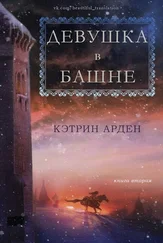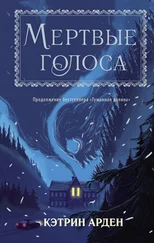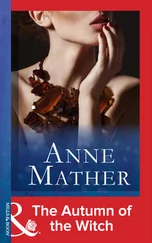BELIYE—Porcini, a kind of mushroom.
BOYAR—A member of the Kievan or, later, the Muscovite aristocracy, second in rank only to a knyaz, or prince.
BROTHER ALEKSANDR PERESVET—Historically a monk and member of the Trinity Lavra under Sergius of Radonezh; he fought a single combat with Chelubey to open the Battle of Kulikovo. Both men were killed, but according to Russian sources, Chelubey was unhorsed first.
BYZANTINE CROSS—Also called the patriarchal cross, this cross has a smaller crosspiece above the main crossbar, and sometimes a slanted crossbar near the foot.
CAFFA—A city in Crimea, now known as Feodosia. In the era of The Winternight Trilogy, the city was under the control of the Genoese.
CATHEDRAL OF THE ASSUMPTION—Uspenksy Sobor. Also known as the Cathedral of the Dormition. Commemorates the dormition (aka falling asleep, aka death of the Mother of God and her being taken to heaven). Located in the modern-day Moscow Kremlin, the original limestone structure was begun in 1326 and consecrated in 1327. The building presently on the site dates to the sixteenth century.
CHELUBEY—Called Chelubey by Russian chroniclers and Temir-Murza by his own countrymen, Chelubey was the champion for the Tatar side at the battle of Kulikovo. He was defeated by Aleksandr Peresvet.
CHERNOMOR—An old wizard and sea-king in Russian folklore whose name literally derives from “Black Sea.” With his thirty-three sons he would come out of the sea to guard the island of the swan-maiden in the fairy tale of Tsar Saltan.
CHYERTI (SINGULAR: CHYERT)—Devils. In this case a collective noun meaning the various spirits of Russian folklore. Another, and possibly better, term is nyechistiye sili, literally “unclean forces,” but that is an unwieldy mouthful for Anglophone readers.
DAN—Tribute; in this case, the tribute owed by the conquered Rus’ to their Mongol overlords.
DED GRIB—Grandfather Mushroom. There is no historical source for this one; he was inspired by and is a shout-out to a character in the old Soviet children’s movie Morozko.
DMITRII DONSKOI—Called Dmitrii Ivanovich in The Winternight Trilogy, he earned the moniker “of the Don” following his victory at the Battle of Kulikovo.
DOMOVOI—In Russian folklore, the guardian of the household, the household-spirit. Feminized in The Winter of the Witch as domovaya. In some sources, the domovoi had a wife, called the kikimora, but I felt that feminizing the name of the main household-guardian was more appropriate for a witch’s house.
DVOR—Dooryard. The space between outbuildings in the property of a highborn medieval Russian.
DVOROVOI—The dooryard-guardian of Russian folklore.
ECUMENICAL PATRIARCH—The supreme head of the Eastern Orthodox Church, based in Constantinople (modern Istanbul).
GAMAYUN—A black bird in Russian folklore that speaks prophecy, generally depicted as a bird with a woman’s head.
GER (YURT)—A portable round tent made of felt or skins and used by Mongol armies on the march. Generally they were taken down and put up each night, but the finest one, used by the Khan or the leader of the host, was often left intact and transported from place to place on a giant platform drawn by oxen.
GOLDEN HORDE—A Mongol khanate founded by Batu Khan in the twelfth century. It adopted Islam in the early fourteenth century, and at its peak ruled a large swath of what is now Eastern Europe, including Muscovy.
GOSPODIN—Form of respectful address to a male, more formal than the English “mister.” Might be translated as “lord.”
GOSUDAR—A form of address akin to “Your Majesty” or “Sovereign.”
GRAND PRINCE (VELIKIY KNYAZ)—The title of a ruler of a major principality, for example Moscow, Tver, or Smolensk, in medieval Russia. The title tsar did not come into use until Ivan the Terrible was crowned in 1547. Velikiy Knyaz is also often translated as “Grand Duke.”
GREAT KHAN—Genghis Khan. His descendants, in the form of the Golden Horde, ruled Russia for two hundred years.
HEGUMEN—The head of an Orthodox monastery, equivalent to an abbot in the Western tradition.
ICONOSTASIS (ICON-SCREEN)—A wall of icons with a specific layout that separates the nave from the sanctuary in an Eastern Orthodox church.
IVAN—This reference is to the fairy tale Marya Morevna, where Ivan, having been cut apart by the wicked sorcerer, is restored to life by his brothers-in-law, the bird-princes, who go and get him the water of death (which restores his flesh) and the water of life (which returns him to life).
IZBA—A peasant’s house, small and made of wood, often with carved embellishments. The plural is izby.
KOKOSHNIK—A Russian headdress. There are many styles of kokoshniki, depending on the locale and the era. Generally the word refers to the closed headdress worn by married women, though maidens also wore headdresses, open in back, or sometimes just headbands, that revealed their hair. The wearing of kokoshniki was limited to the nobility. The more common form of head covering for a medieval Russian woman was a head scarf or kerchief.
KOLOMNA—A town that still exists today, part of the Moscow region. Its name likely derives from the Old Russian word for a bend in the river. Its official arms were granted by Catherine the Great. The historical location of Dmitrii’s mustering of the Russian army before marching to Kulikovo.
KREMLIN—A fortified complex at the center of a Russian city. Although modern English usage has adopted the word kremlin to refer solely to the most famous example, the Moscow Kremlin, there are actually kremlins to be found in most historic Russian cities. Originally, all of Moscow lay within its kremlin proper; over time, the city spread beyond its walls.
KULIKOVO—Kulikovo Pole, literally “Snipes’ Field.” The location of the historic Battle of Kulikovo, which took place in 1380.
LESNAYA ZEMLYA—Literally, “Land of the Forest.” Vasya, Sasha, and Olga’s home village, the location for much of the action of The Bear and the Nightingale, referenced in The Girl in the Tower and The Winter of the Witch.
LETNIK—A calf-length, light woman’s garment with long, wide sleeves, worn over a shift.
LISICHKI—Chanterelles, a kind of mushroom.
LITTLE BROTHER—English rendering of the Russian endearment bratishka. Can be applied to both older and younger siblings.
LITTLE SISTER—English rendering of the Russian endearment sestryonka. Can be applied to both older and younger siblings.
MATYUSHKA—Literally, “little mother,” a term of endearment.
MEAD—Honey-wine, made by fermenting a solution of honey and water.
METROPOLITAN—A high official in the Orthodox church. In the Middle Ages, the Metropolitan of the church of the Rus’ was the highest Orthodox authority in Russia and was appointed by the Byzantine Patriarch.
MONASTERY OF THE ARCHANGEL—The monastery’s full name was Aleksei’s Archangel Michael Monastery; it was more familiarly known as the Chudov Monastery, from the Russian word chudo, miracle. It was dedicated to the miracle of the Archangel Michael at Colossae, where the angel purportedly gave the power of speech to a mute girl. It was founded in 1358 by Metropolitan Aleksei.
Читать дальше

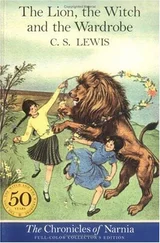
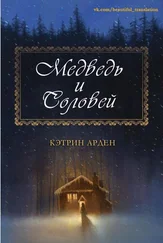

![Кэтрин Арден - Мертвые голоса [litres]](/books/389907/ketrin-arden-mertvye-golosa-litres-thumb.webp)
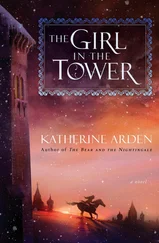
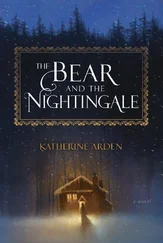

![Кэтрин Арден - Девушка в башне [litres]](/books/415518/ketrin-arden-devushka-v-bashne-litres-thumb.webp)
